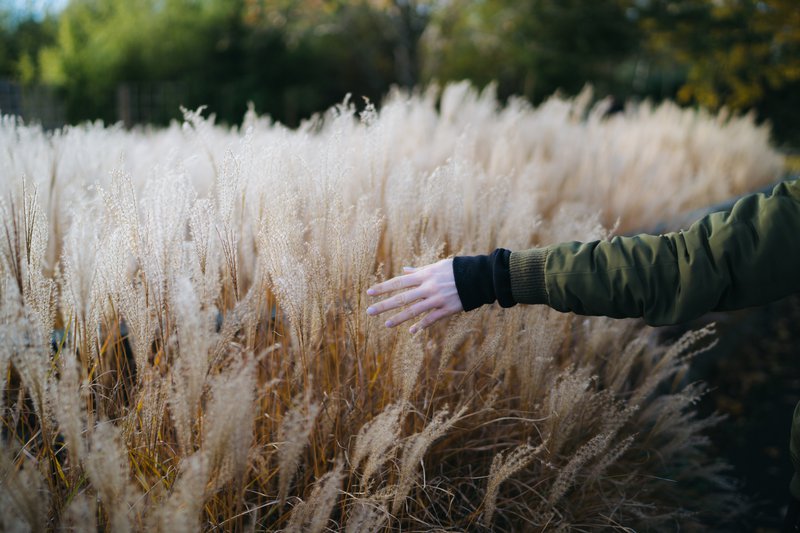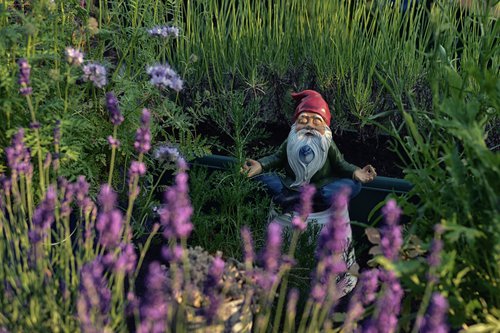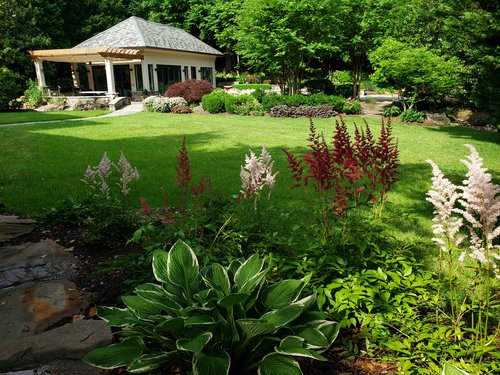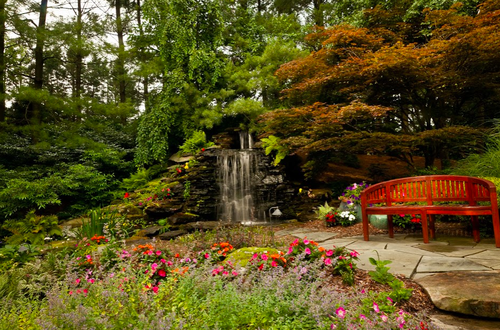
Bring the Senses to Life in Your Garden
Breathe in the good, breathe out the bad. Sensory gardens are great for the soul.
Life can get pretty stressful. It’s not a big surprise to say that life amid the pandemic has more than multiplied your everyday worries by quite a bit. In fact, two out of three adults say they have experienced increased stress over the course of the pandemic, the American Psychological Association reports.
These compounding stress levels can have real consequences on your mind and body.
That leaves you seeking more things that calm you. It’s not a fluke that many state parks have seen record visitation numbers during 2020. Research shows spending time outdoors can reduce stress and help alleviate anxiety and depression. Spending time in nature can temper cortisol spikes and provide a calming place.
Everything nature provides — sunlight, a breeze, the scent of spring blooms, the touch of soft grasses, a magnificent view — they all do good things for us mentally and physically.
Not only do these spaces help all of us, but they can be particularly helpful to those with autism, depression or even aging individuals suffering from other health conditions.
Did you know you can enjoy this kind of sensory experience in your own backyard? Here's how.

What is a sensory garden?
The goal of a sensory garden experience is to stimulate and engage the five senses of sight, smell, sound, touch and taste.
Focusing on these elements in your landscape design and choosing specific plants for a sensory garden enables you to connect with your outdoor environment and be more mindful in the space. These measures can enhance your well-being, reduce stress and calm your mind.
To truly have a sensory experience, your garden can be arranged thematically, so you feel different senses at different moments. Or you can get a mix of senses in your environment, blending the experience.

Plants for a sensory garden
When planning a sensory garden, you want to think about the plants you choose carefully and talk with your landscaping professional about your wishes.
For sight, bright and bold blooms like tulips, alliums and purple coneflower can catch the eye. Color pairings or a rainbow of shades can be a visual delight. Wildflowers can even attract butterflies, bringing additional movement to the space.
Plants for a sensory garden can also include those of varying heights and textures like ornamental grasses. Plants with unique leaves like hosta can engage your eyes.

Outdoor features that impact multiple senses
Just by having an outdoor space to enjoy you will get the benefit of another sense: sound. Wind rustling through the leaves on trees and grasses brings a soothing element.
But you can enhance the sense of sound with a water feature to incorporate that trickling sound that is not only pleasant to the ears, but also a delight for the eyes to watch. Dipping your fingers or toes in the water brings touch into the picture.
Many plants for a sensory garden also can bring an element of touch. The soft leaves of lamb’s ear, wavy and feathery purple fountain grass, delicate rose petals or freshly cut grass that you can sink your toes into can all bring that “feeling” of nature to your backyard.
But touch isn’t only soft. Natural stone patios add a rough texture, as do retaining walls and other structures made from stone, brick or metal. This mix of textures is important to create contrast.
Incorporate smell into your space with fragrant blooms like lavender and honeysuckle, or create an herb garden that is a sensory experience all on its own with rosemary, thyme, sage and mint. And this kind of garden is one you can taste, as well, when you whip up dishes using your freshly cut herbs.

Tune out the world
We can help you create a happy, healthy sensory garden that you can truly escape into it, tuning out the world and connecting to nature.
Taking the time to stop and experience the space only enhances its benefits. Look around. Breathe deep. Listen closely. Feel the tickle of the wind as it blows across the hairs on your arm. Stress melts away.
Want to incorporate a sensory garden into a section of your landscape or as part of a larger design? We’d love to help you have a special, custom space that can soothe your stress and create a place of peace and solace. Learn more about gardens we’ve designed here or contact us for a consultation about how we can awaken the senses in your garden.





